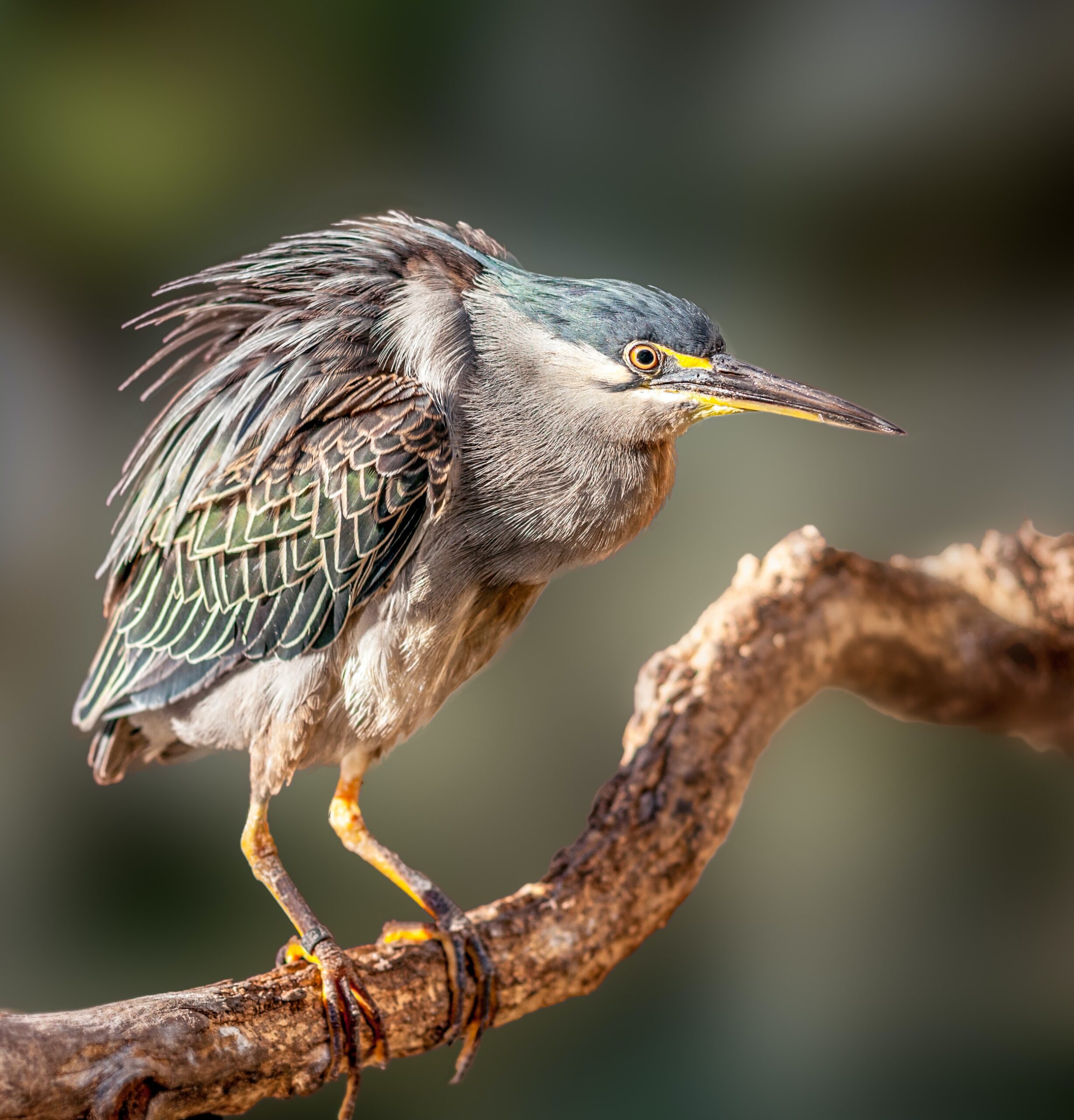Green Heron Bait-Fishing on a Summer Night Pond
By Andrew Dolby
I live in downtown Fredericksburg, VA, and one of my small summer pleasures is to take my dog for a walk around Cossey Pond in the late evening or early morning. If we’re lucky, we’ll catch a glimpse of a Green Heron, one of my favorite summer residents. These compact herons are identified by their greenish-gray backs and crowns, chestnut neck plumage with a few white streaks down the middle, and bright yellow legs. The eastern part of their winter/permanent resident range extends from the southern Atlantic and Gulf Coast to northern South America. We are right in the middle of its East Coast breeding range, which extends all the way up to Maine. Based on my experience, the best place to spot one in Fredericksburg is low along the water’s edge, either resting or stalking prey in the shallows. They mostly eat small fish, but also catch other small animals such as frogs, insects, snails, and crayfish.
Green Herons also belong to a very exclusive avian club—they are tool users. Only a few dozen species are known to use tools, but they represent a wide range of taxonomic groups, including crows, parrots, gulls, and warblers. Most famously, New Caledonian Crows use sticks, leaves and other plant parts to remove insect larvae from tree cavities. While other species, such as the Galapagos Islands’ Woodpecker Finch, also use tools in a similar way, New Caledonian Crows take it a big step further. They can customize objects to best suit the job at hand. For example, they can precisely trim a screw pine leaf so that it is broader at the base, for easy manipulation, and tapered at the tip, to complete the task.
Other birds use rocks to break open eggs and mollusk shells. Atlantic Puffins have been observed using sticks as backscratchers, which I have to say is one of my favorite tool use examples. Green Herons use tools for fishing. While hunting in shallow water, they carefully place bits of food or floating objects in front of them within striking distance. When fish approach to take the bait, they make their move with lightning speed and impressive accuracy. YouTube has some great footage of this fascinating behavior. Check one out HERE. Another heron known to use this fishing tactic is the closely related Striated Heron. So, fishing with bait appears to be a family business.
Another fact about the Green Heron, but not at all fun, is that while still common, they are in sharp decline. No one is sure why, but habitat loss is probably one major factor. Far too many birds are suffering similar losses, and identifying and mitigating the causes of these declines is becoming increasingly imperative.
I’ll close here with a wish, or a prayer if you’re of a mind: That our grandchildren will have the same opportunity while on an evening walk to spy a Green Heron fishing with bait at the water’s edge.
***
Andrew Dolby is a biology professor at the University of Mary Washington, where he has been a faculty member since 2000. A self-professed wildlife nut, a young Andrew was studying encyclopedia entries for “okapi” and “cassowary” while the other boys were out playing pickup baseball. He now teaches courses in animal behavior, ornithology, ecology, and evolution, and leads student field trips to Central America and the Galapagos Islands. In his free time, he enjoys running the Fredericksburg trails, drinking locally brewed beer, and plotting his next opportunity to add some new bird, monkey, or carnivorous mammal to his sightings list.


